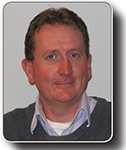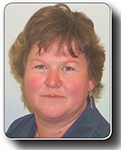New exploration opportunities on the southwest Australian margin—deep-water frontier Mentelle Basin
Irina Borissova A , Barry Bradshaw B , Chris Nicholson A , Heike Struckmeyer A and Danielle Payne AA Geoscience Australia
B CO2 Geological Storage Solutions
The APPEA Journal 50(1) 47-60 https://doi.org/10.1071/AJ09004
Published: 2010
Abstract
Acreage release by the Australian Government in 2010 offers exploration opportunities in the frontier Mentelle Basin for the first time. The Mentelle Basin is a large deep-water basin on the southwest Australian margin. It consists of a large, very deep water (2,000—4,000 m) depocentre in the west and several depocentres in the east, in water depths of 500–2,000 m. The major depocentres are estimated to contain 7–11 km of sediments.
Initial rifting in the Mentelle Basin occurred in the Early Permian, followed by thermal subsidence during the Triassic to Early Jurassic. In the Middle Jurassic renewed extension led to the accumulation of very thick sedimentary successions in half-graben depocentres. Early Cretaceous continental breakup was accompanied by extensive volcanism resulting in a thick syn-breakup volcanic succession in the western Mentelle Basin.
Assessment of the petroleum prospectivity of the Mentelle Basin is based on correlations with the adjacent Vlaming Sub-basin. These correlations suggest that the Mentelle Basin depocentres are likely to contain multiple source rock intervals associated with coals and carbonaceous shales, as well as regionally extensive reservoirs and seals within fluvial, lacustrine and marine strata. Petroleum systems modelling suggests that potential source rocks are thermally mature and commenced generation in the Early Cretaceous. The Mentelle Basin offers a wide range of play types, including faulted anticlines and fault blocks, sub-basalt anticlines and fault blocks, drape and forced fold plays, and a large range of stratigraphic and unconformity plays.

Irina Borissova is a senior research scientist in Geoscience Australia’s Petroleum and Marine Division. She graduated from Moscow State University with MSc in geomorphology and received a PhD in 1985 from the Russian Academy of Sciences. Since joining Geoscience Australia in 1993 she contributed to a number of projects including the Law of the Sea and prospectivity assessments of frontier areas. In the past few years Irina has focussed on the southwest margin working on the Naturaliste Plateau, the Vlaming Sub-Basin and the Mentelle Basin. Irina has been a project leader for the Mentelle Basin study. Member: PESA. irina.borissova@ga.gov.au |

Barry Bradshaw is a Principal Geological Consultant at CGSS. He graduated from the University of Sydney (1988) and a PhD in Earth Sciences at the University of Waikato (NZ) in 1991. He has 18 years experience in basin studies from Australia and North America applied to oil and gas exploration, sediment-hosted mineral systems, and carbon dioxide capture and storage. In 2002–08, he led several projects at Geoscience Australia that assessed the petroleum potential of frontier basins along the southern and southwestern Australian continental margins. Since 2008, he has worked as a geological consultant to provide regional assessments and technical advice on CO2 geological storage projects. In 2009, Barry was awarded a PESA Meritorious Service Award. Member: SEPM and PESA. barry.bradshaw@cgss.com.au |

Chris Nicholson works as a research scientist at Geoscience Australia’s Petroleum and Marine Division. His research is now on the geology and petroleum potential of southwest Australian margin with a focus on the Mentelle and Perth basins. Chris recently participated in Geoscience Australia’s southwest margin marine reconnaissance survey. Chris is leading a study into the complex structural architecture of the north Perth Basin. Previously, Chris has undertaken research into the petroleum prospectivity of the Bremer Sub-basin, analogue sandbox modelling of extensional systems and the structural and geochemical controls on gold mineralisation at Kambalda, Western Australia. Chris graduated from the Australian National University with a BSc (Hons) 2000. chris.nicholson@ga.gov.au |

Heike Struckmeyer is a principal research scientist in Geoscience Australia’s Petroleum and Marine Division. She graduated from the University of Göttingen, Germany, in 1981 and received a PhD from the University of Wollongong in 1989. Since joining Geoscience Australia in 1988, her work has been focussed on the evolution and prospectivity of Australia’s northern, northwestern, eastern and southern margins, and on regional basin analysis and petroleum systems modelling. In recent years, she has worked on projects in the Browse, Bight, Arafura and Mentelle basins. Member: PESA. heike.struckmeyer@ga.gov.au |

Danielle Payne works as a research scientist at Geoscience Australia in the Petroleum and Marine Division. The research she is now involved in looks at the geology and petroleum potential of Australia’s southwest margin and particularly the Mentelle and North Perth basins. She was a graduate at Geoscience Australia in 2008 and completed three 3–4 month projects looking at the geomorphology of the Gifford Guyot (Lord Howe Rise), core from Gun Island-1 and Houtman–1 (Houtman Sub-basin) and coastal vulnerability modelling in the greater Sydney region. Danielle graduated from the University of Waikato (New Zealand) with a MSc (Hons) in 2008. danielle.payne@ga.gov.au |


